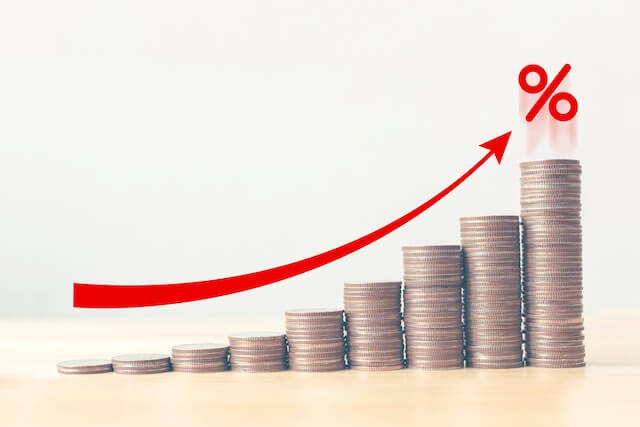Best C and S Fund Monthly TSP Performance 2020
After three months of stocks declining, TSP fund performance jumped up in November. U.S. stocks had their best month in more than a year. The S&P 500 index, on which the C Fund is based, was up 8.9% for the month. The C Fund did a little better than that though as it finished November up 9.12%.
The last month the C Fund finished this high for a month was in November 2020, with a return of 10.95%. It is now up 20.76% for the year.
The S Fund had the best performance of any TSP Fund in November, with a return of 11.19%. The S Fund is now up 13.44% for the year. However, that is not the best yearly return. The C Fund is now up 20.76% for the year.
The most aggressive Lifecycle Funds (L Funds) are up 16.75% in 2023. These three funds with the highest stock percentage in their portfolios (L 2055, L 2060, and L 2065) were up 9.14% in November—slightly above the monthly return for the C Fund.
TSP Performance for November 2023 and Year-to-Date
| Fund | November 2023 | Year-to-Date |
|---|---|---|
| G Fund | 0.41% | 3.82% |
| F Fund | 4.51% | 1.79% |
| C Fund | 9.12% | 20.76% |
| S Fund | 11.19% | 13.44% |
| I Fund | 8.54% | 12.33% |
| L Income | 2.81% | 6.99% |
| L 2025 | 3.67% | 8.65% |
| L 2030 | 5.88% | 11.62% |
| L 2035 | 6.44% | 12.36% |
| L 2040 | 6.97% | 13.10% |
| L 2045 | 7.44% | 13.72% |
| L 2050 | 7.88% | 14.37% |
| L 2055 | 9.14% | 16.75% |
| L 2060 | 9.14% | 16.75% |
| L 2065 | 9.14% | 16.75% |
2023 TSP Returns Up
Despite being down three months in a row, 2023 is still turning out to be a good year for the TSP as indicated by the chart. Based on October data from the TSP, average balances for TSP investors have increased this year and the overall assets in the TSP are also higher. When the November data are released next month, these figures will obviously go up.
While past experience does not always lead to the same results in the future, there is now a trend that bodes well for the rest of this year. Based on trends starting in 1950, the S&P 500 usually has strong returns following a monthly gain of 8% or more. On average, the S&P index has increased another 1.8% after gaining 8% or more in November.
Here are several indications of how the rising market has impacted the TSP investments of FedSmith readers.
| TSP Balance October 2023 | TSP Balance December 2022 | Roth Balance October 2023 | Roth Balance December 2022 | Number of Accounts October 2023 | |
| FERS | $161,067 | $157,325 | $21,784 | $24,238 | 4,035,936 |
| CSRS | $183,541 | $174,512 | $31,825 | $29,334 | 252,250 |
| BRS | $11,921 | $10,301 | $10,285 | $9,016 | 802,263 |
| TSP | $771 (billion) | $725,850 (billion) | $47 (billion) | $39,304 (billion) | 6,951,790 |
Changes in Asset Allocation by TSP Investors
The stock market was down in 2022. Except for the G Fund, any TSP Fund displayed a negative return. As the market went down, the percentage of assets in the G Fund increased, and assets in the stock funds declined. As a result of the market turning around this year, the C Fund has once again become the TSP Fund with the largest percentage of assets allocated by participants.
Here is how this figure has progressed from December 2022 to October 2023. With the positive results from November, the percentage of assets going into the C Fund will likely become larger.
TSP Participant Asset Allocation Percentage
| Month | G Fund % Allocation | C Fund % Allocation | S Fund % Allocation | I Fund % Allocation |
| Dec 22 | 33.1 | 28.9 | 64.4 | 3.5 |
| Jan 23 | 31.8 | 29.3 | 9.5 | 3.7 |
| Feb 23 | 32.0 | 29.0 | 9.6 | 3.6 |
| Mar 23 | 31.7 | 29.5 | 9.2 | 3.7 |
| Apr 23 | 31.5 | 29.7 | 8.7 | 4.0 |
| May 23 | 31.7 | 29.7 | 8.7 | 3.9 |
| Jun 23 | 29.8 | 30.9 | 9.1 | 3.9 |
| Jul 23 | 28.7 | 31.6 | 9.5 | 3.9 |
| Aug 23 | 29.1 | 31.5 | 9.3 | 3.7 |
| Sep 23 | 30.2 | 30.8 | 9.0 | 3.6 |
| Oct 23 | 30.7 | 30.8 | 8.6 | 3.5 |
Investors Add to Stock Funds As Market Advances
To put this into perspective by looking at the billions of dollars involved, participants allocated $240.1 billion to the G Fund in December 2022. $210 billion was allocated to the C Fund—a difference of about $30 billion in favor of the G Fund. By October 2023, $236.9 billion was in the G Fund and $237.1 billion in the C Fund—a difference of about $30.1 billion.
Looking at all of the TSP core stock funds (C, S, and I Funds), in December 2022, 41.3% of participants’ money was in stocks for a total of $300.1 billion. At the end of October 2023, 42.9% was in the core stock funds for a total of $330.5 billion. Over 11 months, $30.4 billion more went into stocks than into the G Fund.
$30.4 billion is a substantial amount of money. The $30.4 billion difference is about 3.94% of total TSP assets.
What Will Investors Do With a Dramatic Drop in Stock Value?
Most investors do not like a bear market. The exceptions are those who want to invest more when stock prices are down. That can take patience and nerves of steel, and most of us do not have nerves of steel.
At the end of December 1999, the TSP was smaller with over $91 billion in assets. In December 1999, TSP participants put $427 million into the C fund while withdrawing $427 million from their bond funds. In January 2000, another $728 million was moved into TSP stock funds.
The American stock market was flying high. In 2000, a bear market started. Most investors probably did not pay much attention. When TSP participants received their December 2000 statements, many realized their TSP stock investments were dropping fast.
This was a real bear market. The C Fund dropped 9.14% in 2000, 11.94% in 2001 and 22.05% in 2002. From June through October 2002, TSP participants pulled $3.8 billion from the C fund and put their money into bonds. They sold their stock funds just before the C fund jumped up almost 29% in 2003 (the I fund went up 38%, and the S fund went up 43% in 2003). At the height of the bull market, 66% of investments went into stocks. By the end of 2002, as the bear market was ending, 47% was going into stocks.
Most TSP investors tend to have an investment plan and stick to it. It is hard not to panic in a lengthy bear market—especially for those in or near retirement. Having an investment plan in place will make it easier to control the emotional reaction to losing money.





